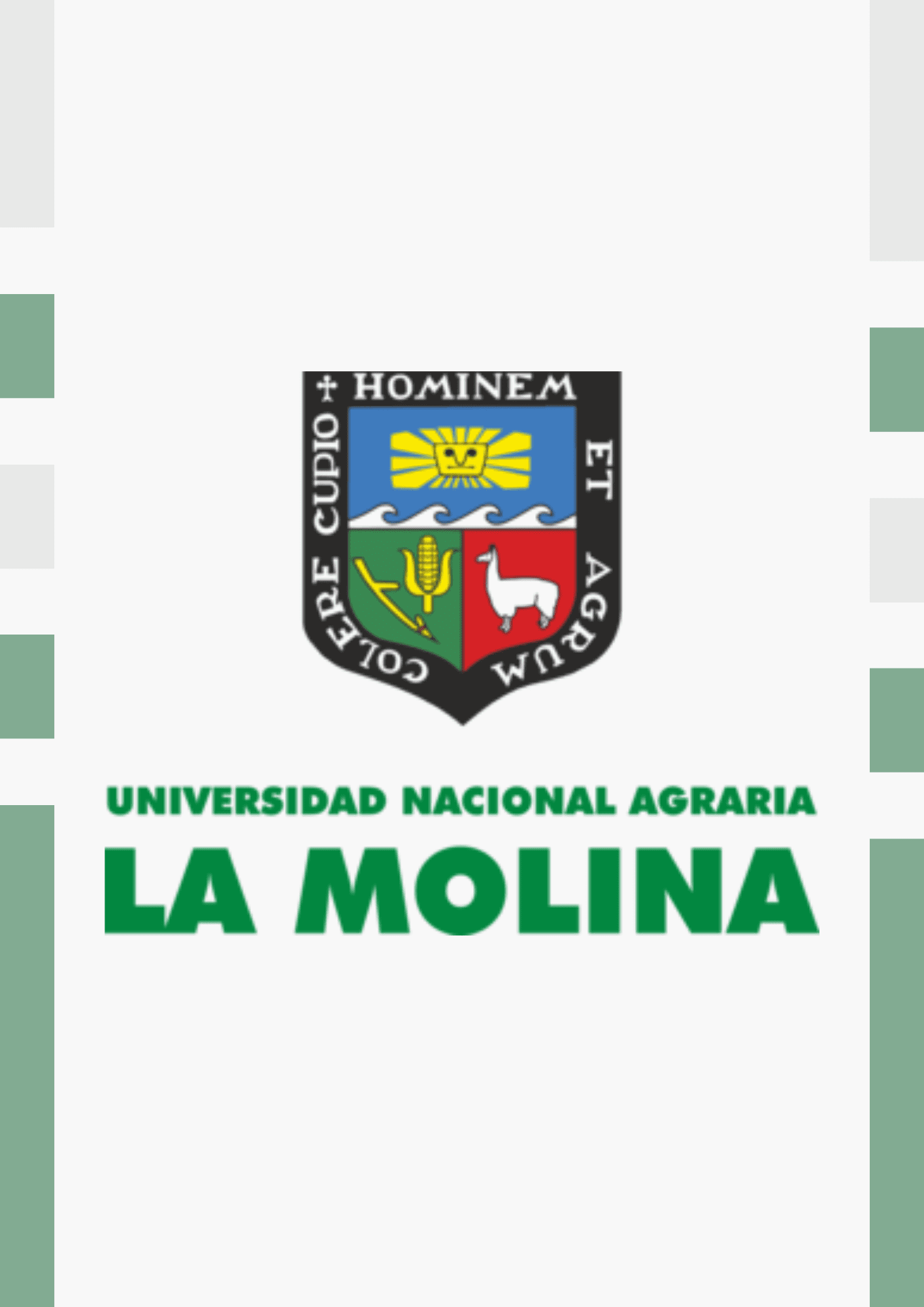Taxonomía fenotípica y molecular de bacterias aisladas de nódulos de Clitoria brachystegia Benth., una leguminosa en peligro de extinción
| dc.contributor.advisor | Zúñiga Dávila, Doris Elizabeth | |
| dc.contributor.advisor | Ormeño Orillo, Ernesto | |
| dc.contributor.author | Soto Valenzuela, Javier Oswaldo | |
| dc.date.accessioned | 2021-08-26T14:54:42Z | |
| dc.date.available | 2021-08-26T14:54:42Z | |
| dc.date.issued | 2021 | |
| dc.description | Universidad Nacional Agraria La Molina. Escuela de Posgrado. Doctorado en Ciencias e Ingeniería Biológicas | |
| dc.description.abstract | En este trabajo de investigación se describen las características morfológicas, bioquímicas y moleculares de los microorganismos aislados de los nódulos de una leguminosa endémica del bosque seco tropical. Las evaluaciones morfobioqímicas establecen concordancia con las descripciones fenotípicas de rhizobia. Las técnicas moleculares BOX-PCR y amplificación de los genes 16S y recA, así como la ultramicroscopía, confirman la presencia de Proteobacterias simbiontes y acompañantes. Aquí se reporta por primera vez la especificidad simbiótica entre Clitoria brachystegia Benth. y sus rizobios hospederos. Se aislaron cuarenta y siete cepas de Rhizobium, Bradyrhizobium y Burkholderia, a partir de las raíces noduladas colectadas en cinco localidades con suelos que van de ácidos (pH 4,28) a neutros y ligeramente alcalinos (7,32), con alta humedad relativa promedio (83%), temperaturas cálidas (19 a 22,5 °C), hasta los 858 msnm de altitud. Además, se obtuvieron valores de solubilización de fosfatos, producción de ácido indolacético, sideróforos, crecimiento en diferentes niveles de temperatura, pH, salinidad, el efecto en la nodulación y crecimiento en plantas trampa; así como en valores de fijación simbiótica de nitrógeno, mediante la prueba de reducción de acetileno (ARA), con rangos significativos al ecosistema, que van desde 0,5 a 54,27 µmol etileno h-1 g -1 . El objetivo de esta investigación fue evidenciar la tipificación, relaciones taxonómicas, diversidad y una probable especificidad simbiótica de C. brachystegia con sus rizobios, este último quizás limitado por los factores edafoclimáticos particulares de un hábitat considerado como uno de los ecosistemas más amenazados del mundo; y, que en un futuro pudieran ser clave para la conservación y reforestación de esta leguminosa en peligro de extinción, reportada en la también llamada región tumbesina que comparten Perú y Ecuador. | |
| dc.description.abstract | In this research the morphological, biochemical and molecular characteristics of the microorganisms isolated from the nodules of a legume endemic to the tropical dry forest are described. Morphobiochemical evaluations establish agreement with the phenotypic descriptions of rhizobia. BOX-PCR molecular techniques and amplification of the 16S and recA genes, as well as ultramicroscopy, confirm the presence of symbiont and companion Proteobacteria. Symbiotic specificity between Clitoria brachystegia Benth is reported here for the first time. and its host rhizobia. Forty-seven strains of Rhizobium, Bradyrhizobium and Burkholderia were isolated from nodulated roots collected in five locations with soils ranging from acidic (pH 4,28) to neutral and slightly alkaline (7,32), with high average relative humidity (83%), warm temperatures (19 to 22,5 ° C), up to 858 meters above sea level. In addition, phosphate solubilization values, indoleacetic acid production, siderophores, growth at different levels of temperature, pH, salinity, the effect on nodulation and growth in trap plants were obtained; as well as in symbiotic nitrogen fixation values, through the acetylene reduction test (ARA), with ranges significant to the ecosystem, ranging from 0,5 to 54,27 µmol ethylene h-1 g -1 . The objective of this research was to show the typification, taxonomic relationships, diversity and a probable symbiotic specificity of C. brachystegia with its rhizobia, the latter perhaps limited by the particular edaphoclimatic factors of a habitat considered one of the most threatened ecosystems in the world; and, that in the future could be key to the conservation and reforestation of this endangered legume, reported in the socalled Tumbes region shared by Peru and Ecuador. | |
| dc.format | application/pdf | |
| dc.identifier.uri | https://hdl.handle.net/20.500.12996/4870 | |
| dc.language.iso | spa | |
| dc.publisher | Universidad Nacional Agraria La Molina | |
| dc.publisher.country | PE | |
| dc.rights | info:eu-repo/semantics/openAccess | |
| dc.rights.uri | https://creativecommons.org/licenses/by-nc-nd/4.0/ | |
| dc.subject | Clitoria brachystegia | |
| dc.subject | Rhizobium | |
| dc.subject | Bradyrhizobium | |
| dc.subject | Fenotipos | |
| dc.subject | Bacteria | |
| dc.subject | Propiedades fisicoquímicas | |
| dc.subject | Evaluación | |
| dc.subject | Perú | |
| dc.subject | Leguminosa | |
| dc.subject.ocde | https://purl.org/pe-repo/ocde/ford#1.06.07 | |
| dc.title | Taxonomía fenotípica y molecular de bacterias aisladas de nódulos de Clitoria brachystegia Benth., una leguminosa en peligro de extinción | |
| dc.type | info:eu-repo/semantics/doctoralThesis | |
| dc.type.version | info:eu-repo/semantics/publishedVersion | |
| renati.advisor.dni | 07851510 | |
| renati.advisor.dni | 25736380 | |
| renati.advisor.orcid | https://orcid.org/0000-0002-4564-6775 | |
| renati.advisor.orcid | https://orcid.org/0000-0001-8210-2497 | |
| renati.author.pasaporte | 0914531090 | |
| renati.discipline | 511018 | |
| renati.juror | Camarena Mayta, Félix | |
| renati.juror | Villena Chávez, Gretty Katherina | |
| renati.juror | Salmoski Klein, Ilanit | |
| renati.juror | Sanjuán Pinilla, Juan | |
| renati.level | https://purl.org/pe-repo/renati/level#doctor | |
| renati.type | https://purl.org/pe-repo/renati/type#tesis | |
| thesis.degree.discipline | Ciencias e Ingeniería Biológicas | |
| thesis.degree.grantor | Universidad Nacional Agraria La Molina. Escuela de Posgrado | |
| thesis.degree.name | Doctoris Philosophiae - Ciencias e Ingeniería Biológicas |


